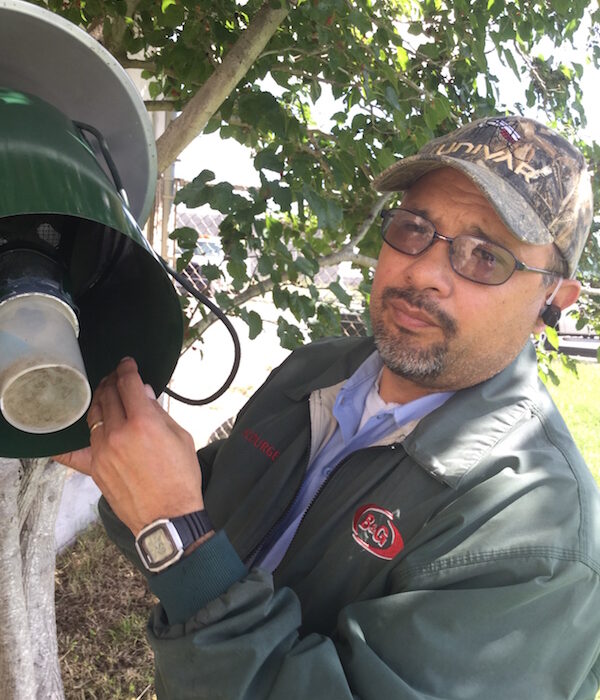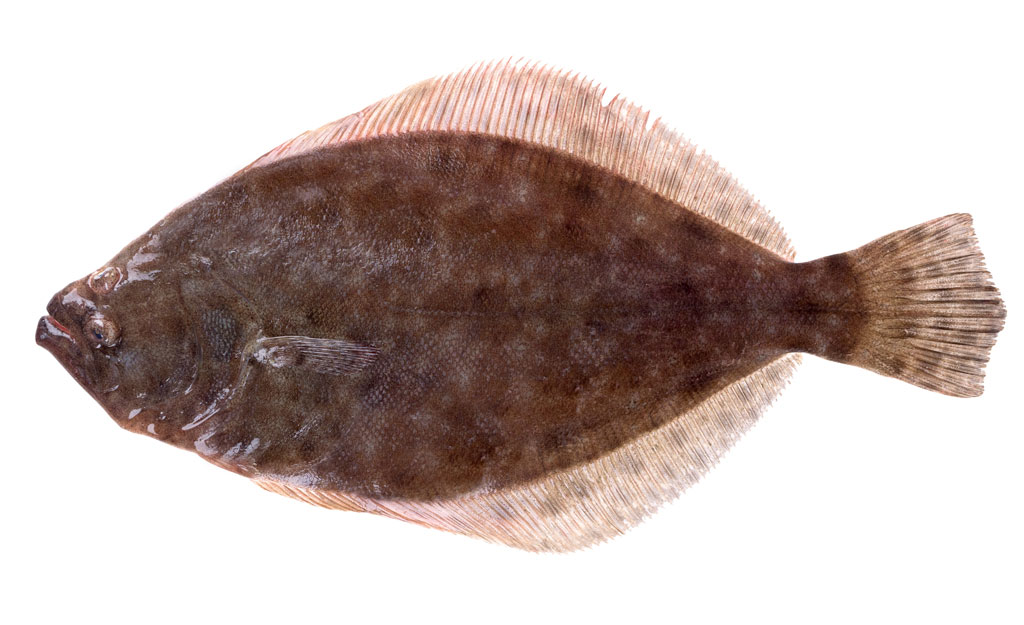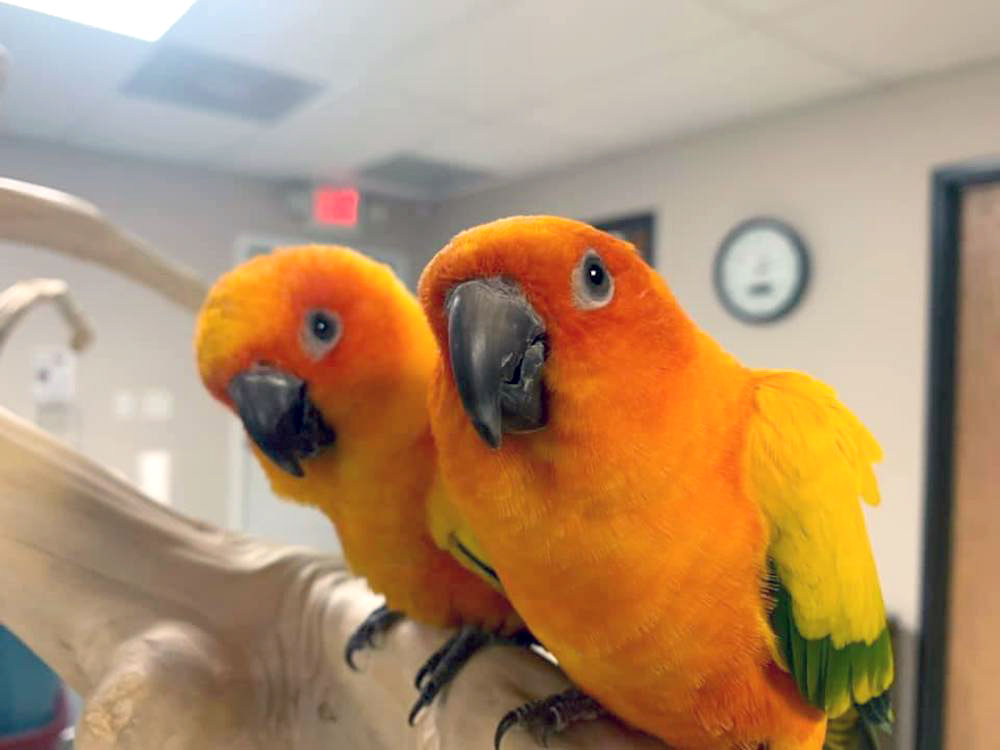
Tony Pantoja collects the mosquitos from a trap set up on city property on Holly Road. Staff Photo
Mosquito alert: the bugs are bad and Corpus Christi Vector Control is out to get them. Spraying to control the recent explosion of biting bugs began this week in the Six Points area, with plans to coat the entire city — eventually. Spraying can only occur when it is not raining and the wind speed is below 20 miles per hour.
The pesticide, which is not dangerous to humans or animals, only kills airborne mosquitos, so fogging is done between 7 p.m. and midnight. Even then the fog only kills about one third of the total mosquito population, which in Corpus Christi includes 37 different types.
Sorting and counting from 12 different traps set up in the city happens each weekday morning at the city’s animal care and vector control facility on Holly Road. The bugs are collected in small plastic containers that look like large prescription pill bottles. The bottles are emptied and counted one at a time on a piece of white copy paper, where moths are picked out and discarded.
Tony Pantoja carefully sorts the mosquitoes by type using a pair of tweezers. A control officer for vector control, he then counts each group and records the results before moving onto the next plastic container. The information recorded is used to determine where the spray truck will go that evening.
“Right now, the worst area is in Calallen,” Pantoja said. “But we couldn’t spray last night. The wind was over 20 miles per hour.”
Five trucks are out spraying on any given night, said Capt. Chris White, who heads the police department’s animal care services, including vector control.
“It takes 10 to 14 days to cover the whole city,” White said. “This will be a repeated process as long as we are having a high count of mosquitoes.”
Especially concerned about West Nile mosquitoes, White said the city is constantly on alert for any sign of the disease-carrying insect.
“West Nile is a very dangerous disease that is prevalent in South Texas,” he said. “If we do locate it, we don’t let it spread. That’s why we heavily target different areas. It’s a rarity, but we have to be consistent about looking for it.”
Pantoja offered a quick and easy rmantra for preventing mosquito bites.
“Remember the four D’s,” he said. “Dusk, dawn, dress and D.E.E.T.”
What it means is to avoid going outside at dusk and dawn when the mosquitoes are most active, use a D.E.E.T.-based bug spray and wear long sleeves and pants.
“All my shirts are long sleeves,” Pantoja said. “I wear them even when it’s hot. If it gets too bad I just roll the sleeves up.”
After 17 years on the job, Pantoja is certainly used to mosquito bites, as well as bee stings.
“When I’m not chasing mosquitoes, I’m working on bees,” he said.
His advice for residents in the areas being sprayed is to stay indoors when the trucks come through. While the pesticide is not harmful and dissipates quickly, someone could be allergic to it.
“We’d rather have people indoors in case of asthma or allergic reactions,” he said.
5 TIPS FOR REDUCING MOSQUITO POPULATION
1. Use an approved insect repellent when you go outside. Approved repellents contain DEET, picaridin or oil of lemon eucalyptus.
2. Drain standing water, including water that collects in empty cans, tires, bird feeders, buckets, clogged rain gutters and saucers under potted plants. Mosquitoes breed in stagnant water. Purchase mosquito donuts (dunks) at retail stores to kill mosquito larvae in standing water.
3. Wear long sleeves and pants at dawn and dusk when mosquitoes are most active.
4. Use air conditioning or make sure there are screens on all doors and windows to keep mosquitoes from entering your home.
5. Maintain your yard, keeping the grass cut. Treat the yard for mosquitoes, fleas, and pests.





